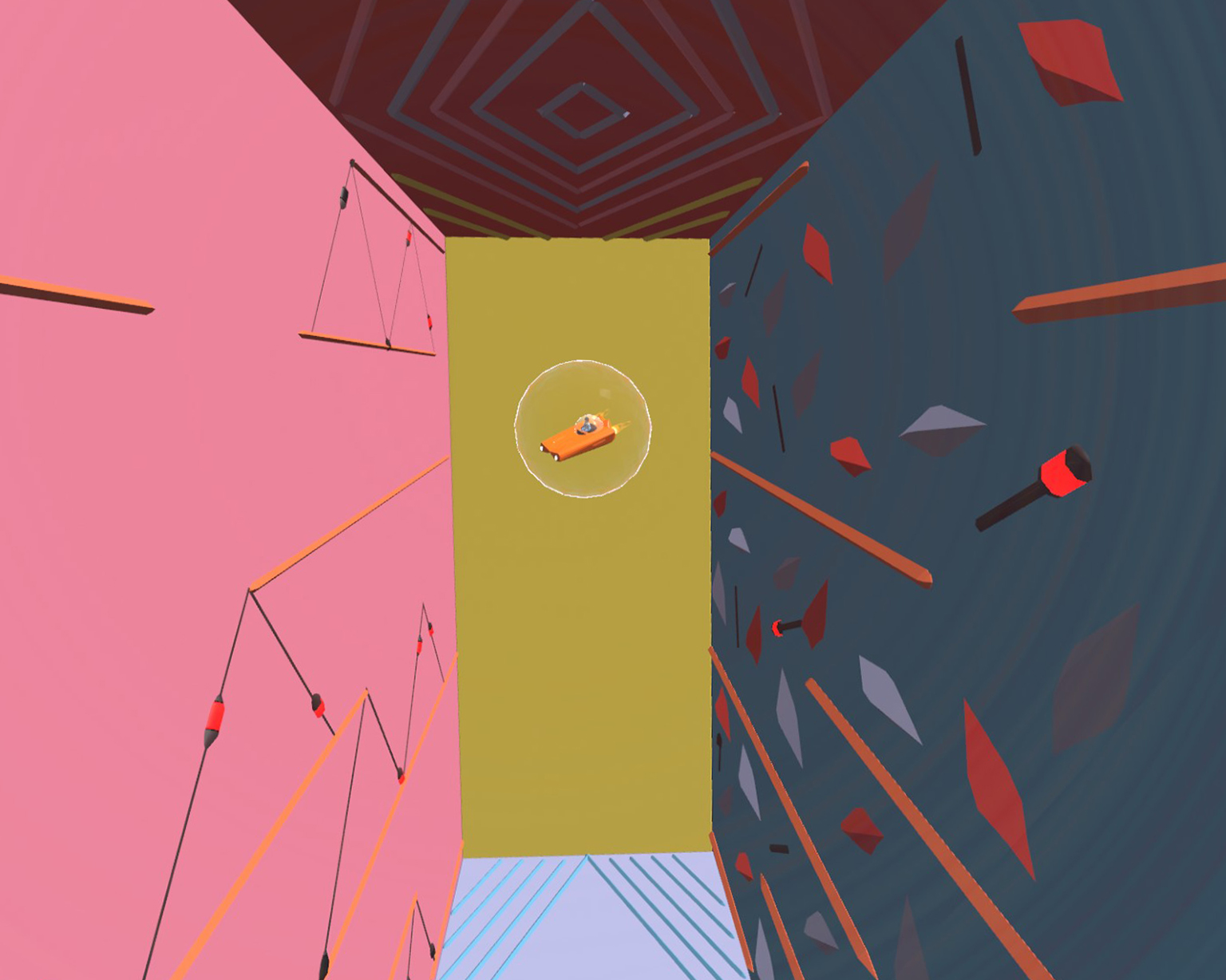Museum of Other Realities / Looking Glass




Description of the space
While approaching the artwork, the high contrast between the very bright and colourful installation and the black surrounding of the museum caught my attention. The cube-shaped work of art is extended only on the floor by two patterns per each side of the square. It seems like the extension on the floor creates a connection between the bright interior and the black architecture around the cube. From the outside two sides of the cube look like they are open, so one can easily enter the installation, but when you enter the inside they become closed. The floor and the ceiling are covered in similar colours, patterns and a few lights that are included inside the linear patterns. The walls are divided into two different colours by about two dozens of lance like looking, colourful bars. The two walls facing each other are yellow and red and the other two are covered in pink and blue. On each wall there is half a glass bulb that let one lurk into another small exhibition room. The walls, the ceiling and the floor of these small exhibition rooms are covered in different colours and patterns with a few lights on the lines, which turn on and off again in a steady rhythm. On the other side of the tiny exhibition rooms one can see another bulb with different objects inside.
Athmosphere
As Michelle Brown describes her own artwork being something between real architecture and the virtual world, I chose this installation because it resembled a mix between fake architecture and the abstract spaces we will be designing, and I was curious to see, how I would feel in such a space.
The bright colours, the blinking lights and the colourful patterns of the space made me think of my childhood – toys and amusement parks in particular. The glass bulbs attached to the walls made me curious to discover, what is hidden behind them. Even though I thought that the blinking lights would make me feel stressed, as their rhythm of turning on and off was rather slow, I did not feel very distracted by them. All in all, I felt quite comfortable but I would not be able to stay in such a room for a very long time. As the installation had walls, a floor and a ceiling, I started looking at how the walls and the bars are connected to the floor and the ceiling, which made me realise that I treated the object as a fake architecture rather than an abstract virtual space.
Description by Vilma Hubalek
While approaching the artwork, the high contrast between the very bright and colourful installation and the black surrounding of the museum caught my attention. The cube-shaped work of art is extended only on the floor by two patterns per each side of the square. It seems like the extension on the floor creates a connection between the bright interior and the black architecture around the cube. From the outside two sides of the cube look like they are open, so one can easily enter the installation, but when you enter the inside they become closed. The floor and the ceiling are covered in similar colours, patterns and a few lights that are included inside the linear patterns. The walls are divided into two different colours by about two dozens of lance like looking, colourful bars. The two walls facing each other are yellow and red and the other two are covered in pink and blue. On each wall there is half a glass bulb that let one lurk into another small exhibition room. The walls, the ceiling and the floor of these small exhibition rooms are covered in different colours and patterns with a few lights on the lines, which turn on and off again in a steady rhythm. On the other side of the tiny exhibition rooms one can see another bulb with different objects inside.
Athmosphere
As Michelle Brown describes her own artwork being something between real architecture and the virtual world, I chose this installation because it resembled a mix between fake architecture and the abstract spaces we will be designing, and I was curious to see, how I would feel in such a space.
The bright colours, the blinking lights and the colourful patterns of the space made me think of my childhood – toys and amusement parks in particular. The glass bulbs attached to the walls made me curious to discover, what is hidden behind them. Even though I thought that the blinking lights would make me feel stressed, as their rhythm of turning on and off was rather slow, I did not feel very distracted by them. All in all, I felt quite comfortable but I would not be able to stay in such a room for a very long time. As the installation had walls, a floor and a ceiling, I started looking at how the walls and the bars are connected to the floor and the ceiling, which made me realise that I treated the object as a fake architecture rather than an abstract virtual space.
Description by Vilma Hubalek
Introduction | Editorial | References | Projects | Research
HEAD – Genève | Interior Architecture | Atelier Simon Husslein | Copyright © 2025